

The U.S. is Britain in the 20/30s trying to maintain "colonial" possessions...like Kuwait...Iraq..."No fly zones"...He hints at it....but misses the most dangerous point...
ALL THIS "PRACTICE" AND THE BRITISH WERE NOT READY FOR WWII.
Are we going to also be unready for WWIII with Red China because we got lulled into a false sense of security over high-tempo SASOs while our next super-power competitor re-arms and gets ready to fight us? Is our failing air no-fly zones "siege" killing our Air Force by wear/tear on its expensive machines and giving the nemy a "learning curve" to figure out how to shoot our planes down? Sun Tzu warned us to not lay sieges, yet that's exactly what we were doing in Iraq: an air siege. All because we are not willing to bring a conflict to a decisive end by GROUND MANEUVER like we did earlier in Grenada and Panama out of fear of casualties!
"What matters in war is VICTORY, not prolonged operations, however brilliantly executed".
---Sun Tzu
If we distort reality bent towards air strike mentalities we are headed for empire disaster ala the Brits. The same mistakes the British made!
Recently, we toppled the Iraqi regime using GROUND MANEUVER. However, we did it on the "cheap" without enough force and half of them unarmored, wheeled motorized forces---we are now stuck with an urban guerrilla war in Iraq! U.S. casualties are climbing.
We cannot let this happen! We must re-organize our Army by Air-Mech-Strike! We need air-transportable, tracked, armored forces that can topple a government, cut-off border escape routes for terrorist/outlaw leaders as well as pacify a violent people without heavy friendly casualties.
HE MAKES SOME DAMNING POINTS:
Air firepower alone doesn't work: GROUND MANEUVER NEEDED
"The problem with Dr. Pape's example of the effectiveness of airpower as a means of threatening an enemy army, as well as the argument by others that with airpower one can control regions and populations, is that the idealized air-control system described by US Air Force writers never really existed. For example, the RAF did play an important role in coercing the Turks to retreat from the Iraqi border in 1924, but no one mentions that the army also deployed two brigade task forces (six battalions, two artillery batteries, one engineer company, and one machine-gun company) north of Mosul at the same time.85 Throughout the era of British air control, in all but the cases of minor local banditry, the British met any serious challenge to their authority with both airpower and sizeable ground forces. Airpower alone put down none of the serious rebellions in Iraq. On the Northwest Frontier of India, airpower was a wonderfully effective force multiplier; however, one cannot escape the fact that these military actions were actually joint operations rather than airpower-alone operations"
Populations Adjust to Bombing
"The very first cases of air control, such as Somaliland in 1920, seemed to have worked very well. Aerial bombardment was a novelty, and its effect was impressive. However, as the British continued to use air-control methods on the frontiers of the empire, the psychological effect largely wore off. Many of the hostile tribes in Aden, on India's Northwest Frontier, and in Kurdistan learned to camouflage their camps and dig air-raid shelters for their villages. Tribes in Kurdistan set up a primitive warning system with observers and smoke signals to warn the most likely targets of the approach of British aircraft.
In later campaigns against the Kurdish leader Sheik Mahmud, the British heavily bombed the rebel capital and center of operations, but the rebels fought on. Arabs fighting the British in Palestine in the 1930s were not overawed by RAF airpower. Indeed, the revolt in Palestine ended not through military force but through a political deal and British compromise that limited Jewish immigration."
Air-Control Skills Do Not Translate Well into Other War-Fighting Skills
Air control took up a great deal of the RAF's effort and attention during the interwar period. For 20 years, the RAF took part in constant combat operations-either bombing campaigns or ground-support operations. Despite these operations, the air-control experience did not translate into tactics useful in conducting a major conventional war. Surprisingly, 20 years of combat experience in supporting ground forces on the imperial frontiers did not develop into a close air support doctrine for the RAF when it went to war in 1939. Indeed, during the first years of World War II, the RAF could not provide effective close air support to troops on the battlefield. The organization, tactics, and control systems all had to be worked out from scratch during the first three years of the war. In short, although air control proved very effective in protecting the RAF's force structure and budget in the interwar period, no one showed interest in learning any lessons that might apply to a serious conventional war.
HE EVEN FORETELLS HOW AIR STRIKE ENTHSIASTS WILL SOMETIMES DISTORT THE TRUTH FOR THEIR OWN ENDS/BUDGETS (Sound familiar?):
"In the early years of air control, the RAF leadership carefully avoided offending the army or slighting the ground forces in their advocacy of air-control doctrine. As one RAF officer wrote in 1922, "It is not for one moment to suggest that aircraft alone can garrison any country without military assistance, but rather to show that economy in military strength and in money may be effected by a more extensive employment of aircraft."54 Air Marshal Sir John Salmond, writing of his campaigns against Kurdish rebels in Iraq and his operations to drive back Turkish incursions on the northern border, gave full credit to the many British and Iraqi army units that had participated in the campaigns."
"Once the future of the RAF as an independent service was assured-largely due to the success of the air-control program-the RAF and its supporters began to assert their views with considerably more boldness. Unsurprisingly, RAF accounts of air-control operations written in the 1930s tended to minimize the army part of the operations and magnify the role of airpower, so the role of the army in the RAF's account of air control gradually faded. Indeed, one such account of air control in Iraq written in 1945 completely excludes any mention of the army in the colonial campaigns of the 1920s and 1930s."
"The RAF, fighting for its institutional survival, made much of this use of airpower in colonial policing, not stressing the fact that it flew most of the sorties in support of the ground forces."
DESERT STORM: 1917 STYLE
"Somaliland had been a very small operation, but the problems in Iraq were enormous, and the military situation looked grim for the British. Their army had seen heavy fighting in Iraq throughout World War I. British expeditionary forces, mostly from the Indian army, fought for four years trying to push the Turks out of the region. Iraq was the scene of one of Britain's greatest defeats in the war when the Turks cut off a British army of nine thousand men and forced them to surrender at Kut in April 1916. The British reinforced their army, counterattacked, and in 1917 took Baghdad. By the end of the war, they had pushed the Turks to Mosul and had occupied most of the country. At the end, the British had 420,000 men in Iraq."
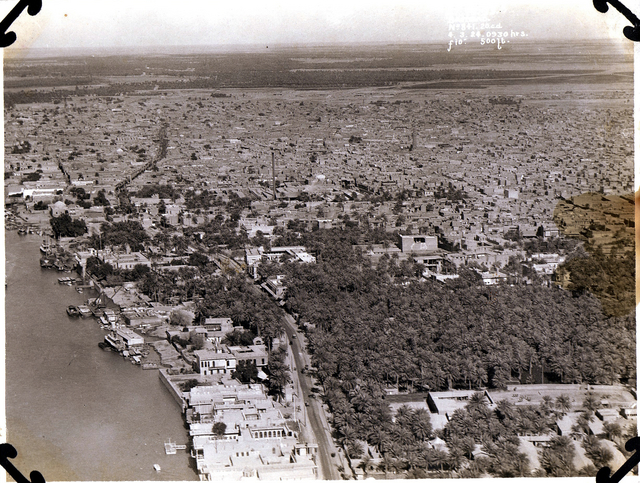
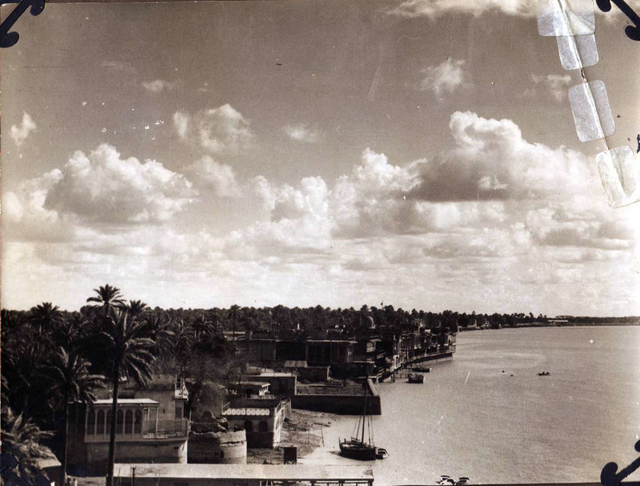
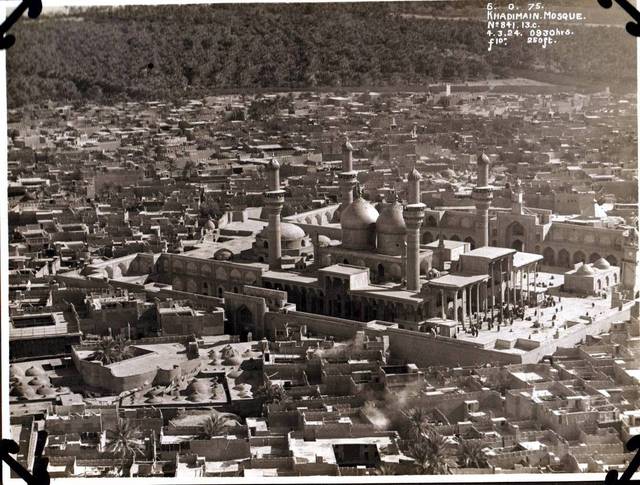
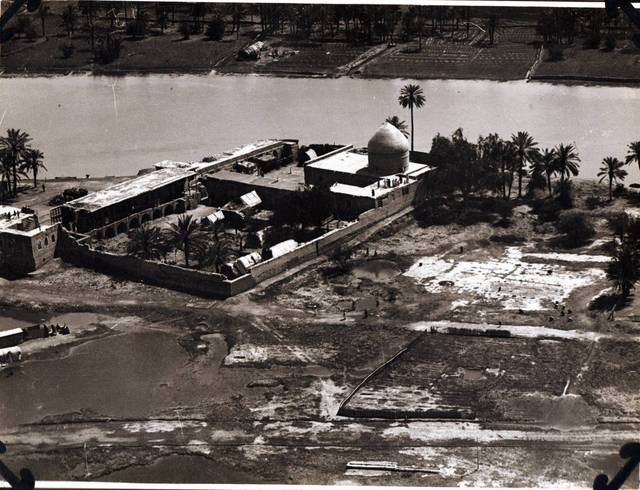
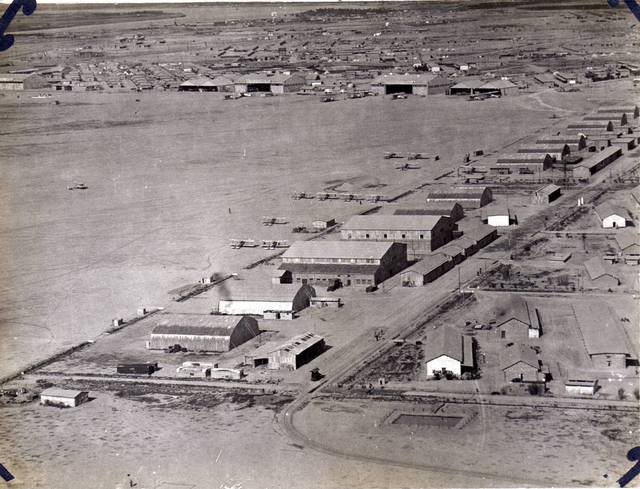
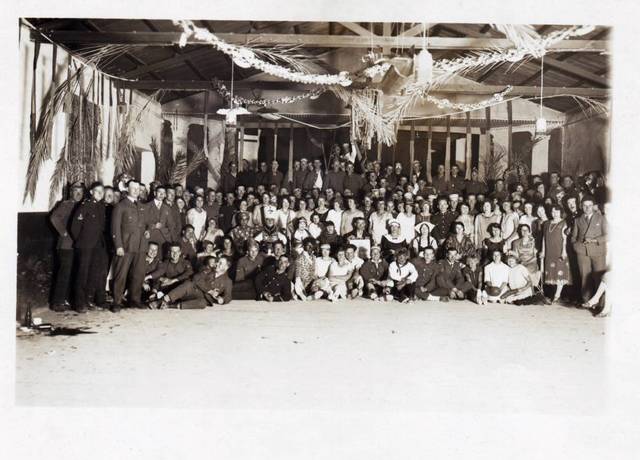
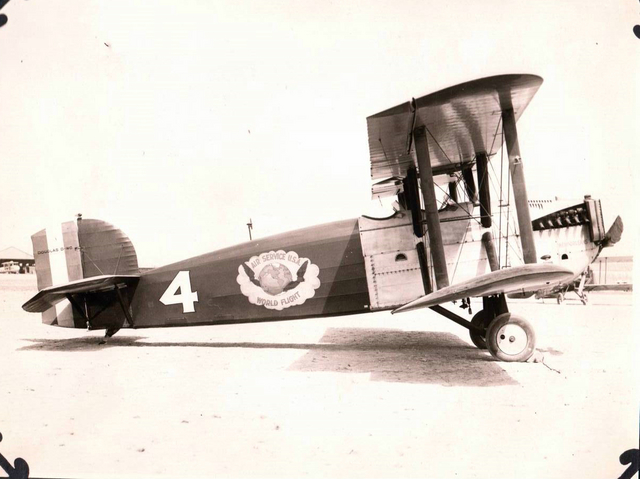
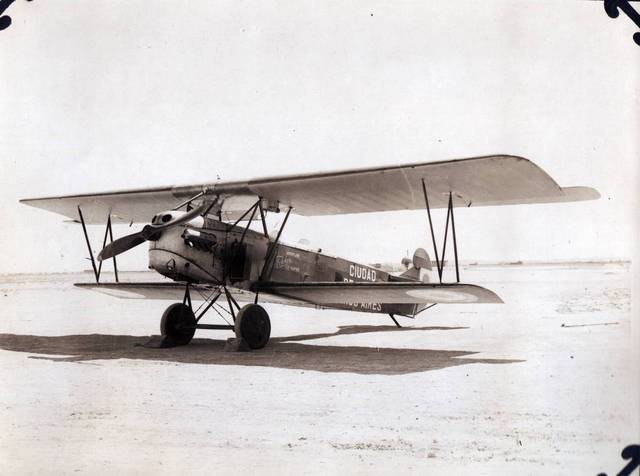
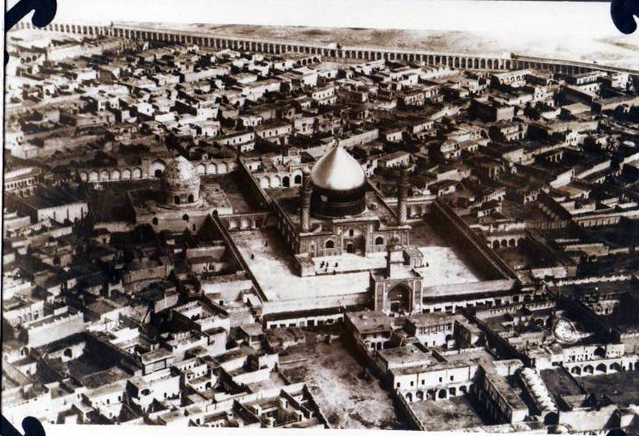
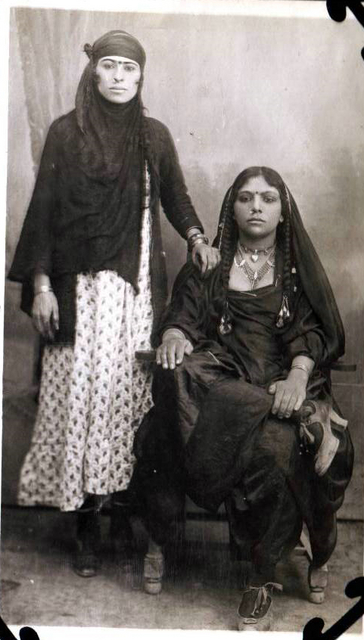
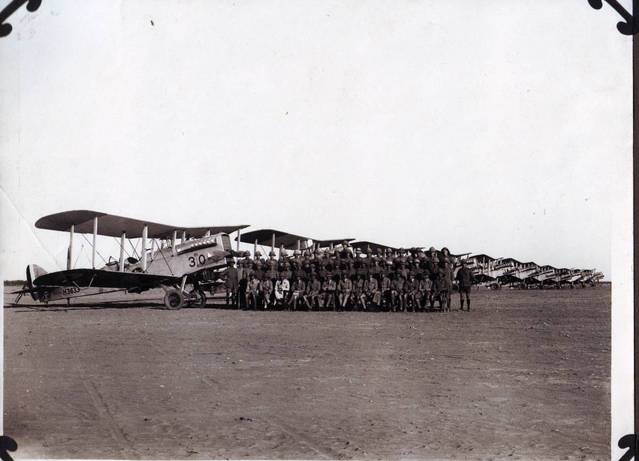
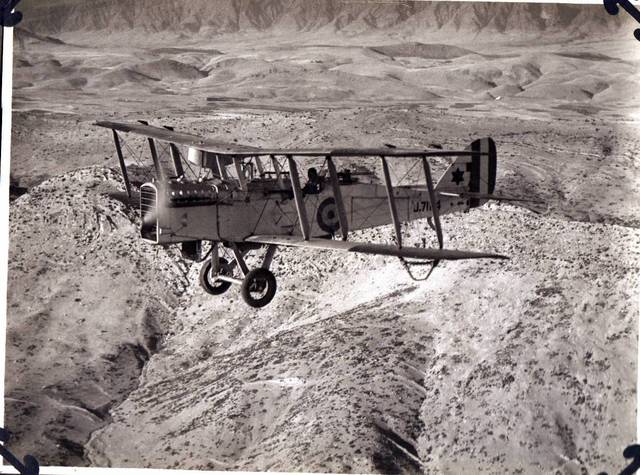
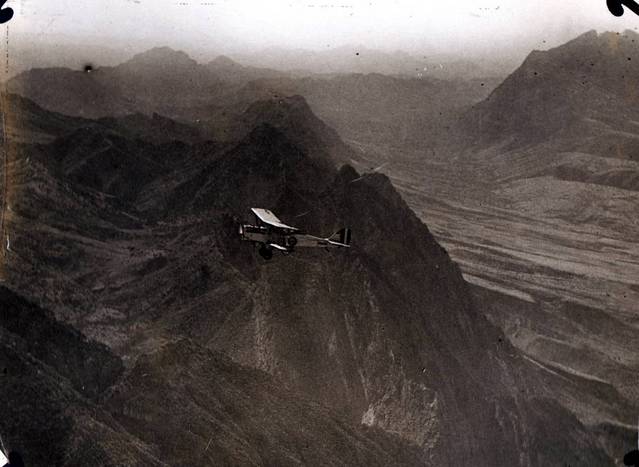
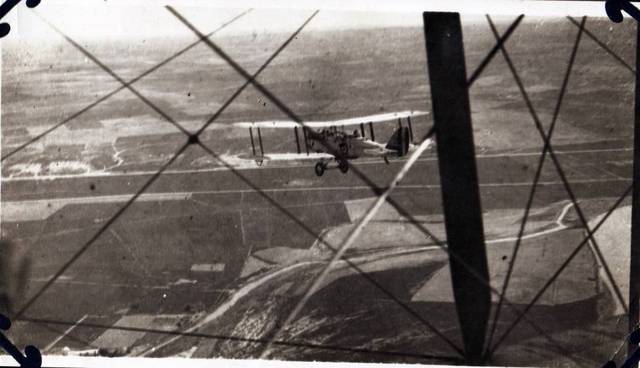
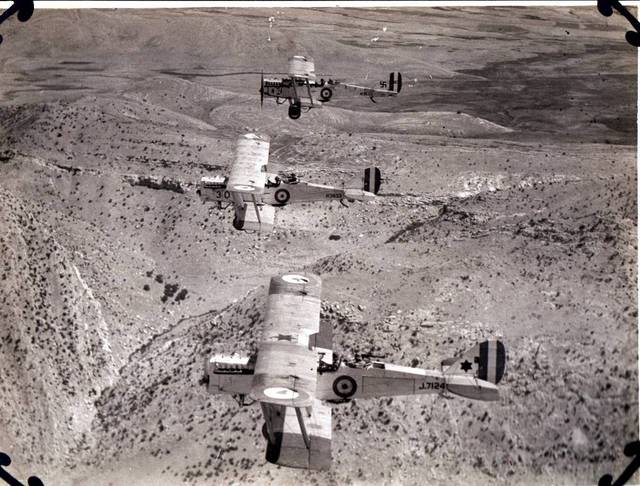
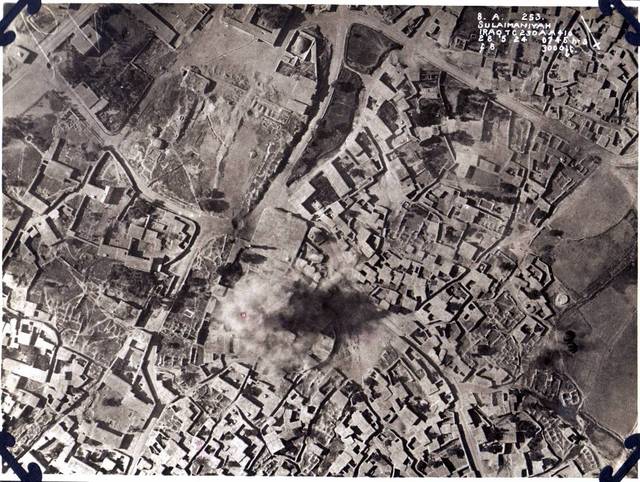
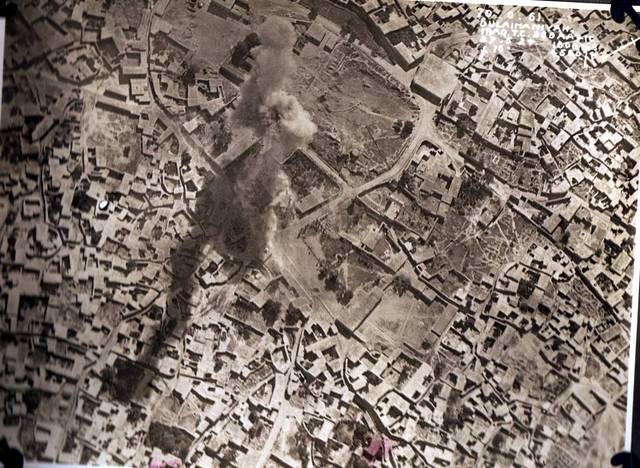
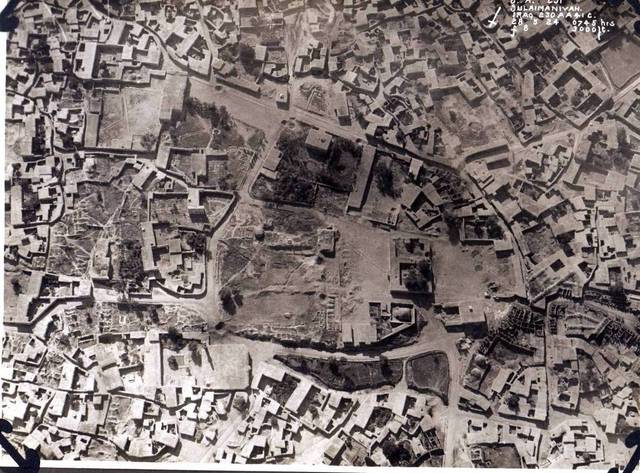
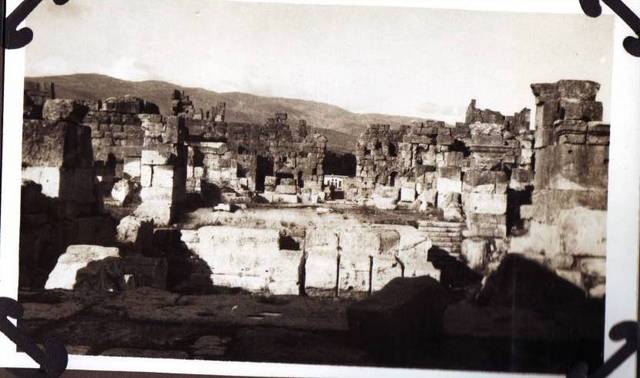
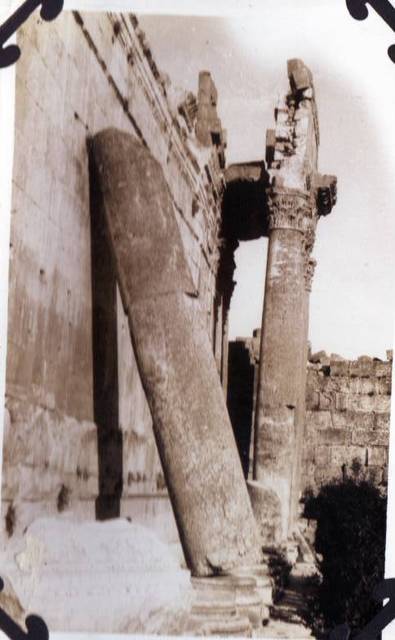
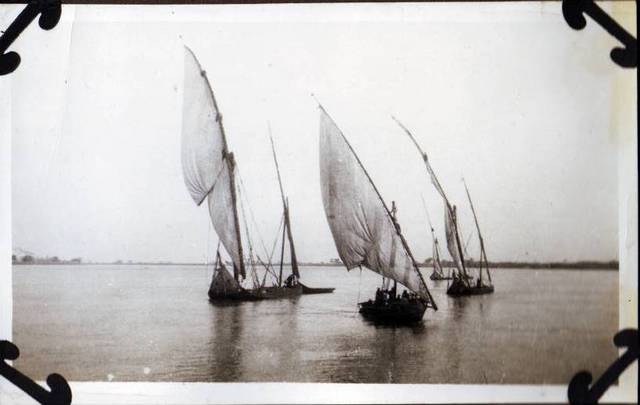
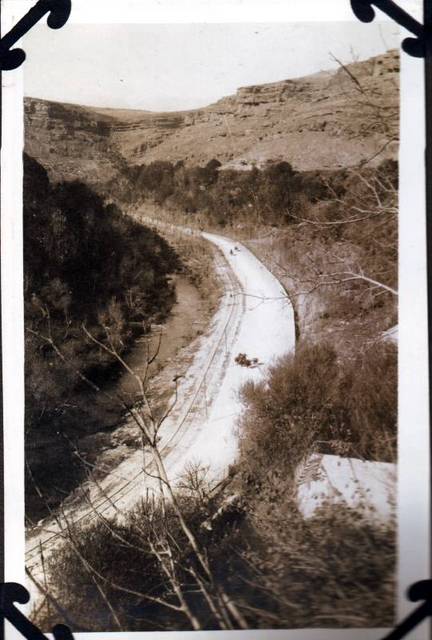
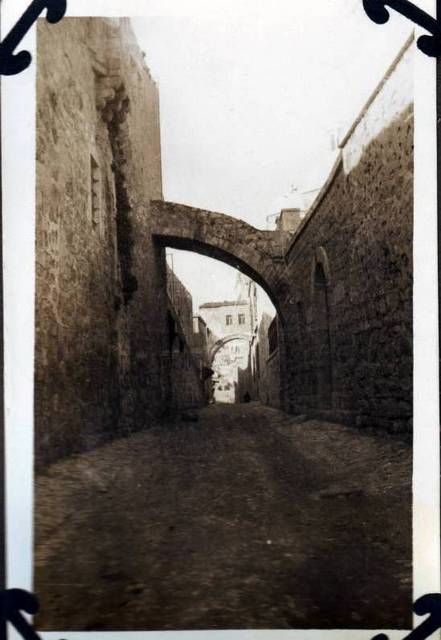
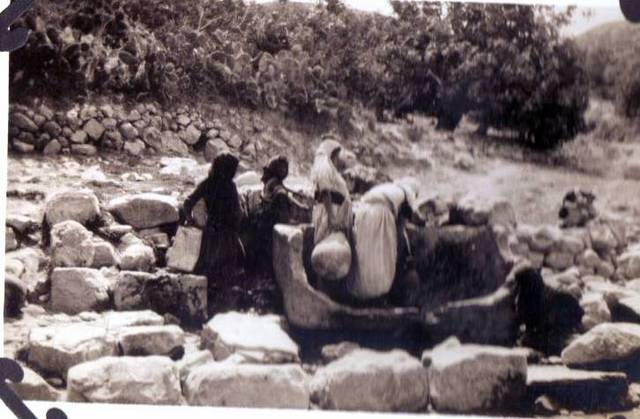
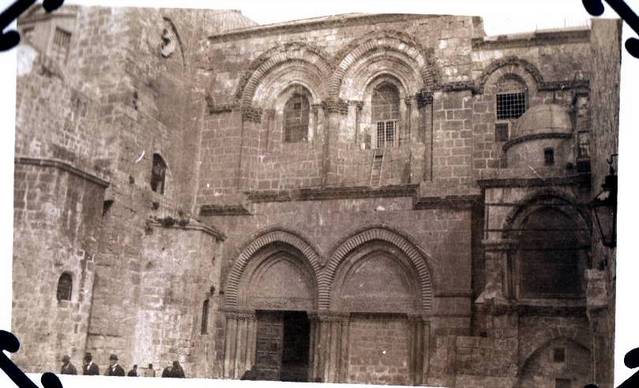
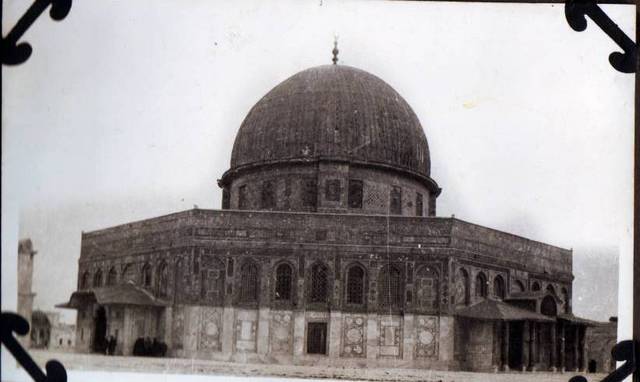
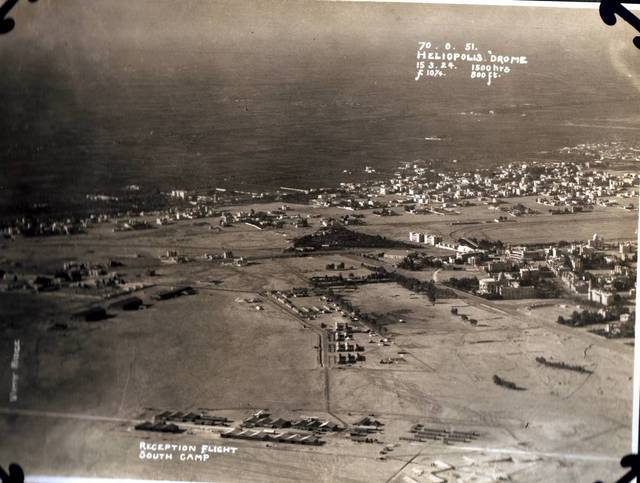
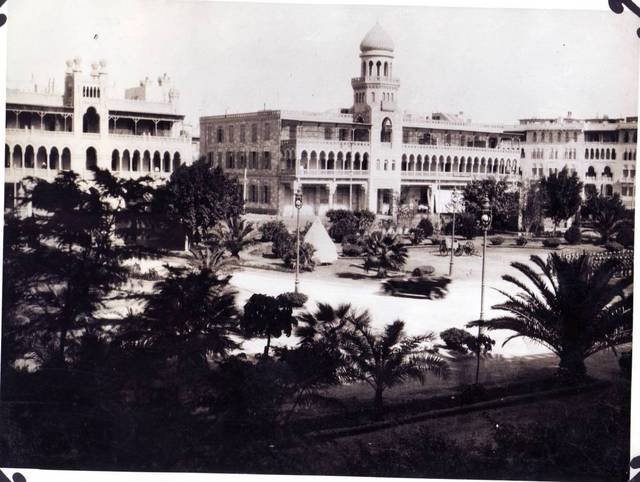
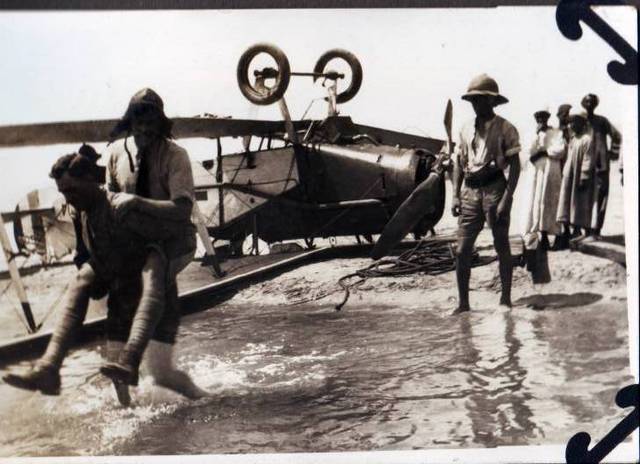
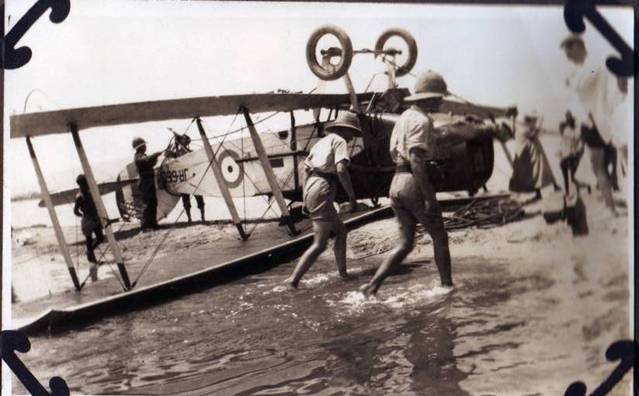
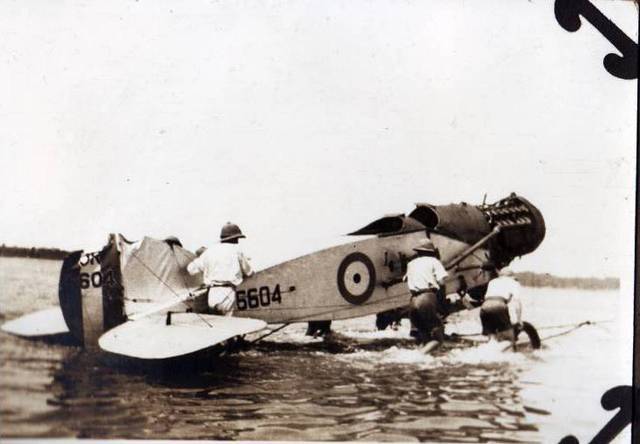
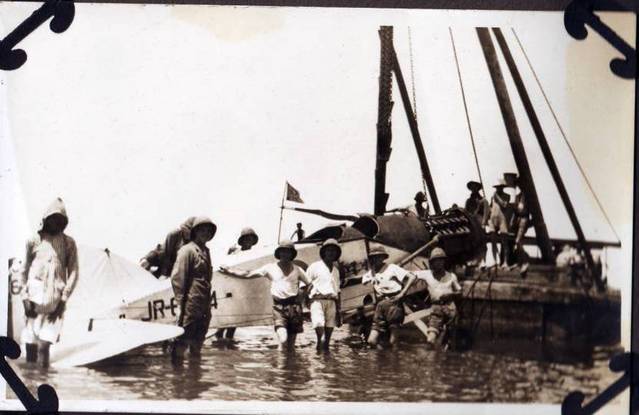
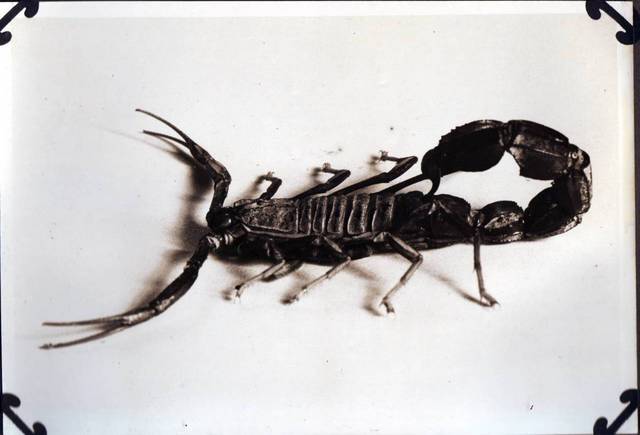
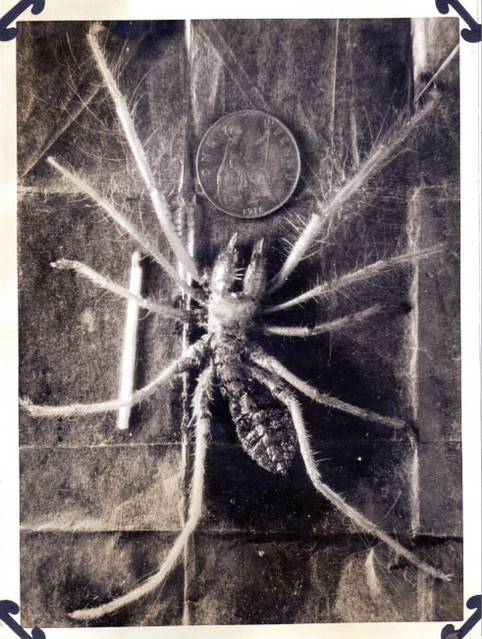
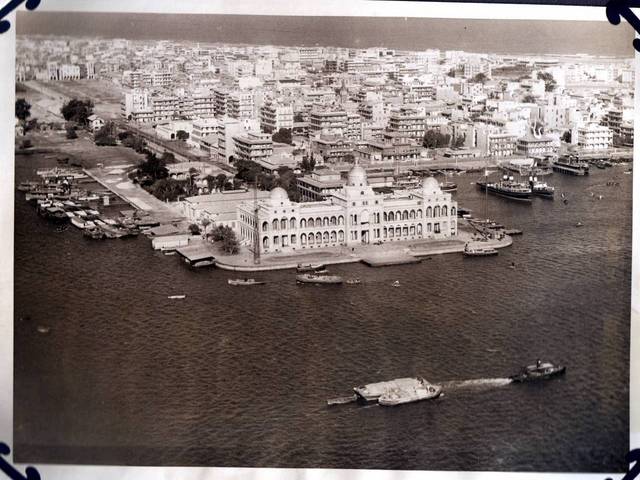
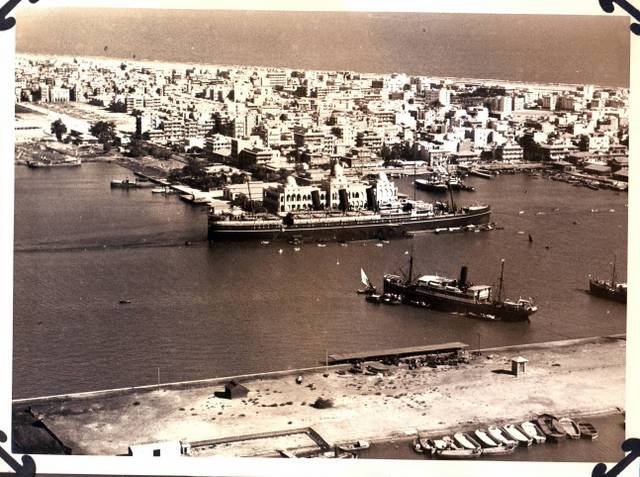
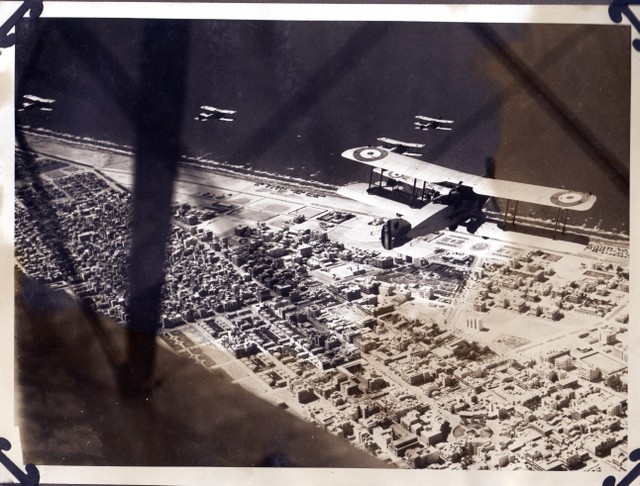
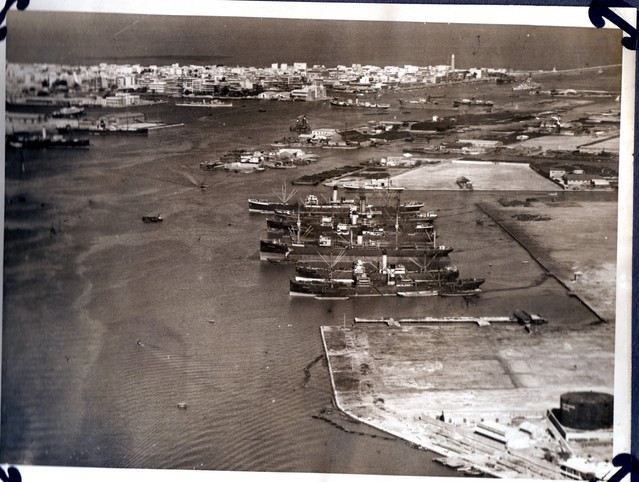
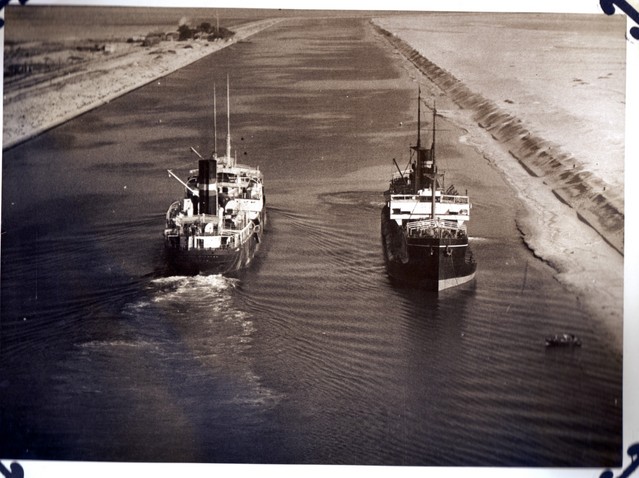
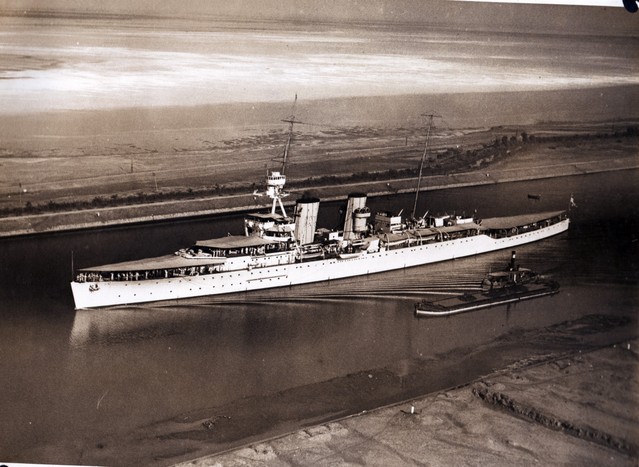
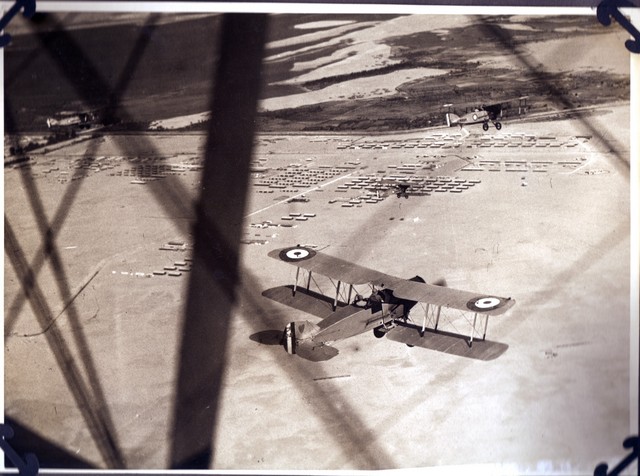









































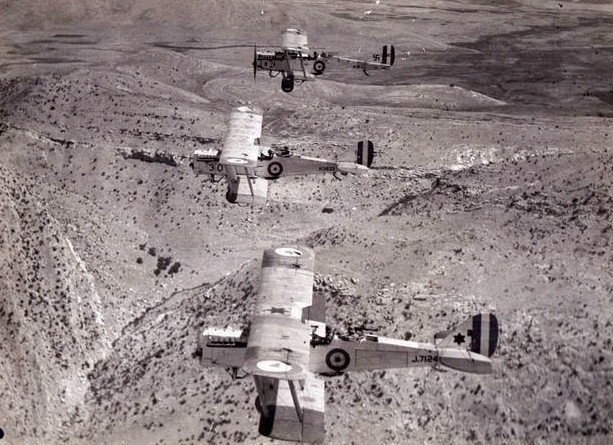

Editorial Abstract: Dr. Corum provides a historical look at air-control operations in the British Empire during the first half of the twentieth century. The idea of occupying and pacifying a country with airpower alone has always appealed to airmen. The author, however, argues that advocating air-control doctrine as the basis for U.S. Air Force operations in the twenty-first century lies more in the realm of myth than reality.
In the aftermath of World War I, a financially strapped Britain had to face up to several expensive, new colonial obligations in the form of League of Nations mandates to govern Palestine, Transjordan, and Iraq. At the same time that the armed forces received orders to assume a costly burden of military occupation in regions rife with violent internal conflicts, the government moved to demobilize the wartime forces and to economize by any means possible. This meant that the British had to police new imperial obligations on the cheap.
At the same time, the Royal Air Force (RAF), which had recently become a separate service in April 1918, was fighting for its institutional existence. Both the army and navy argued that the RAF ought to revert to its position as a subordinate arm of the two senior services. Air Marshal Hugh Trenchard, RAF chief of staff, sought a mission that would justify the service independence of the RAF. The effectiveness of a few aircraft in putting down a minor rebellion in British Somaliland in 1919-20 provided Trenchard and the Air Staff the concept of an independent mission for the RAF. Trenchard proposed that the RAF be given full responsibility for conducting military operations in Britain's most troublesome new mandate-the former Ottoman provinces of Mesopotamia.(1)
Trenchard promised that the RAF could police the mandate with air squadrons and a few armored-car squadrons, supported by a few British and locally recruited troops, at a fraction of the cost of a large army garrison. That particular argument proved irresistible to Whitehall, so in October 1922, RAF air marshal John Salmond took over military command and assumed military responsibility for Iraq. The RAF's primary garrison for Iraq consisted initially of eight squadrons of fighters and light bombers, such as DH-9s. As the RAF's account goes, the air-control doctrine worked remarkably well. All through the 1920s and 1930s, the RAF was able to quell minor rebellions and tribal banditry by swiftly punishing the culprits from the air. Bombing and the threat of bombing seemed to keep Iraq relatively quiet. Policing the empire by means of airpower became popular in other colonies as well. RAF bombing raids largely replaced the army's traditional punitive expeditions mounted against troublesome tribes on India's Northwest Frontier. In Aden, the British also used air attack on numerous occasions to deal swiftly with trouble in the interior.
The idea of occupying and pacifying a country by airpower alone, or with the air force as the primary force employed, is especially attractive to airmen. Indeed, in the 15 years that the United States has found itself involved in various peacekeeping and peace-enforcement operations, as well as no-fly-zone enforcement and a variety of small and conventional wars, Air Force officers and airpower theorists have looked at the RAF's colonial air control as a useful model for the kind of military-occupation missions that the United States conducts today.(2) Further, the idea of controlling a country by airpower, with few or no ground troops involved, has excited the interest of such influential airpower theorists as Carl Builder.(3) The low cost of air control is an especially attractive feature of the operation. Another is the fact that ae-rial policing does not put U.S. Soldiers at risk. It is a good doctrine for casualty avoidance.
However, if one offers air control on the imperial British model as a model for the U.S. Air Force, then one should look carefully at the actual record of air control in the British Empire. The following questions are in order: Did the RAF overstate its role and minimize the actions of ground troops in order to defend its budget? Did air control really work as well as advertised? What were the drawbacks to air control? What was the political context of air control, and is there an analogy to today's political situations? Did other countries use air control, and, if so, what was their experience? After reviewing the record, I will draw a few lessons of my own.
The Genesis of Air Control
The British first employed the concept of air control in the wastes of Somaliland, one of the most primitive backwaters of the empire. Since the 1890s, Mohammed bin Abdullah Hassan, a charismatic tribal leader known as "the Mad Mullah," had caused trouble in the British protectorate by raiding tribes friendly to the British. From 1900 to 1904, the British mounted several punitive expeditions against him and took fairly heavy losses. In 1904 they finally brought the Mad Mullah's main force to battle, defeated it, and drove him out of British territory. However, the trouble did not end. In 1909 Abdullah Hassan started raiding again, and in 1913 his forces shot up a unit of British constabulary. During World War I, the British ignored the problems in Somaliland, but after the war, the British government decided to reinforce the protectorate with an RAF squadron of DH-9 reconnaissance/light-bomber aircraft. Eight aircraft had arrived by January 1920, and the British set to work with surprise bombing raids on Abdullah Hassan's forts. Several days of bombing inflicted heavy casualties, forcing the Mad Mullah to abandon his forts. The army field force-consisting of detachments from the King's African Rifles, Somaliland Camel Corps, and Indian army-moved in pursuit of the mullah's force. Over the next weeks, the RAF reverted to supporting the ground force by reconnaissance and bombing. The mullah escaped and took his remaining forces over the border into Ethiopia, where he died the next year.(4) For the astoundingly low price of 80,000 pounds, airpower had played a central role in defeating a force that had irritated the colony for many years.
The RAF, fighting for its institutional survival, made much of this use of airpower in colonial policing, not stressing the fact that it flew most of the sorties in support of the ground forces. Indeed, the most important part of the outcome was the low cost of the affair. After the successful operation in Somaliland, in March 1921 at the Cairo Conference on Mideast Affairs, chaired by Colonial Secretary Winston Churchill, Air Marshal Trenchard formally proposed that the RAF take over the task of directing military operations in Iraq and that the primary British force employed in that troublesome country be RAF squadrons.(5)
The RAF reverted to supporting the ground force by reconnaissance and bombing.
Somaliland had been a very small operation, but the problems in Iraq were enormous, and the military situation looked grim for the British. Their army had seen heavy fighting in Iraq throughout World War I. British expeditionary forces, mostly from the Indian army, fought for four years trying to push the Turks out of the region. Iraq was the scene of one of Britain's greatest defeats in the war when the Turks cut off a British army of nine thousand men and forced them to surrender at Kut in April 1916. The British reinforced their army, counterattacked, and in 1917 took Baghdad.(6) By the end of the war, they had pushed the Turks to Mosul and had occupied most of the country. At the end, the British had 420,000 men in Iraq.(7)
After the war, the British Foreign Office and Colonial Office had little idea of what to do with Iraq. It was a poor and backward part of the Ottoman Empire, and the British had no major strategic interest in the area (the extent of the oil reserves remained unknown). However, various wartime deals had allocated responsibility for Mesopotamia, Jordan, Arabia, and Palestine to Britain and had given France the responsibility for Lebanon and Syria. During the war, the British placed occupied portions of Iraq under military rule and brought in Indian civil service political officers to administer the territory. This arrangement persisted after the end of the war.
If the British government had deliberately and carefully crafted a grand strategic plan to alienate the three major groups in Iraq (Kurds, Shiite Arabs, and Sunni Arabs) and force the whole country into a massive rebellion against their British occupiers, it could not have succeeded more handily. The Indian political officers tried to impose a very alien Indian-style administration upon the Arabs and Kurds. Under the Turks, the administration might have been inefficient, but at least the Turks spoke Arabic and left the tribes largely alone.8 On top of this new and irritating administration, the British and French governments had issued a declaration on 7 November 1918, promising the Arabs freedom and self-government after the war.(9) They had given hopes for self-government not only to the Arabs but also the Kurds.(10) Such promises were quickly forgotten as the British moved to create an Iraqi monarchy and put a Sunni Arab on the throne. The fact that the British consulted none of the major groups in Iraq especially offended the Kurds and Shiites, the majority of the population.(11) By 1920 Iraq was ready to blow up-and did. The rebellion began in Kurdistan and quickly spread throughout the country.
The 60,200 British troops in the country when the rebellion began were hard-pressed simply to hold on. Small British garrisons in the hinterlands were surrounded and wiped out. The Kurd and Arab rebels were not the primitive and poorly armed tribesmen that the British had faced in Somaliland. When the Turkish Empire had collapsed, large stocks of modern arms and ammunition throughout Syria and Mesopotamia fell into the hands of local tribesmen, equipping the rebels with modern rifles and machine guns.(12) Many of the leaders of the revolt had served in the Ottoman and Arab armies during the war and had a pretty good understanding of modern warfare. They were not likely to be overawed by British aircraft and technology.(13)
The hard-pressed British garrison called for army and air force reinforcements. Nineteen battalions (4,883 British and 24,508 Indian army troops) as well as two additional RAF squadrons were dispatched to Iraq to reinforce the two squadrons already in the country.(14) By August the British were able to mount a successful counteroffensive that stamped out the rebellion by the end of the year. The RAF squadrons performed sterling service in evacuating British personnel, dropping supplies on besieged outposts, and performing constant reconnaissance and bombing missions in support of the ground forces. The Iraqi rebellion of 1920 amounted to a fairly large conventional war, and some major pitched battles occurred between the rebels and British forces. At Rumaitha on 13 October, a three-thousand-man rebel force dug in and stood up to a daylong attack by a British brigade. Starting at 0800, the British pummeled the Iraqis with artillery, and RAF aircraft relentlessly bombed the defenders. Finally, under the weight of a full-brigade attack, the rebels broke and retreated in disorder at 1700.(15) The British suppressed the rebellion but at a cost of 1,040 killed and missing soldiers and 1,228 wounded-not to mention an estimated 8,450 dead Iraqi rebels.(16) The financial cost of the enterprise also shocked the British government. In order to maintain control of a minor colonial mandate with little strategic value, British military operations had cost the treasury 40 million pounds, considerably more than Britain had spent in supporting the Arab revolt against the Turks in World War I.
Iraq proved such a drain of manpower and resources that when the RAF offered to garrison the country at minimal cost, the British government welcomed the idea. On 1 October 1922, the RAF assumed control of military forces in Iraq, marking the first time that an airman directed all military operations in a country.(17) The British government could then announce that it had pulled all army forces out of Iraq at great savings to the taxpayer. Henceforth, the military garrison in Iraq would consist of eight RAF squadrons and four RAF armored-car companies.(18) The British recruited five thousand of the 15,000 local Iraqi levies and police and organized them as the core of an Iraqi army. These local forces would be British equipped, officered, and trained but supported by revenues of the Iraqi state.(19)
The government's announcement that it had withdrawn all British forces from Iraq was technically correct. However, it made little mention of the fact that Indian army brigades and supporting troops had replaced them. Since the Indian State military budget rather than the British War Department budget paid for the Indian army troops, British taxpayers and politicians got a pretty good deal-the only player unhappy with the arrangement was the government of India.(20) Although Iraq became an example of a country garrisoned by airpower, a significant army force remained on hand throughout the entire period of the British mandate until Iraq received full independence in 1932. By 1926 the British had created the framework of an Iraqi army, which boasted a military college, training center, and cavalry school-and the regular army had grown to a force of six infantry battalions, four cavalry regiments, four artillery batteries, and various supporting units.21 The British also maintained at least a brigade of Indian army troops in the country until the 1930s.
Air-Control Policy
The British Empire had long relied upon punitive expeditions to bring rebellious natives back into line. When a border tribe on India's Northwest Frontier violated a treaty or when a band in Aden took a British official hostage, the standard response called for putting together a military expedition, marching on the tribal center, burning some villages, destroying crops, and killing any tribesmen who offered resistance. Then the army column would return to the garrison, knowing that the natives had been taught a lesson and would not likely defy British power again. The lesson and deterrent effect would last for a short time-sometimes months, sometimes years-and then the tribesmen would commit another outrage, necessitating another British expedition to punish them.(22) Punitive expeditions ranged in size from a platoon of the Camel Corps riding against one village to months-long operations mounted on the Northwest Frontier by thousands of soldiers. A comprehensive list of punitive expeditions mounted by Britain at the height of the empire-between 1840 and 1940, from Burma to India to the Sudan-would certainly number in the hundreds, probably in the thousands. In short, such expeditions were brutal but indispensable means of keeping the empire under control.
To put it simply, air control meant substituting aerial bombardment for the traditional ground-based punitive expedition. Airplanes could reach the object of the expedition (e.g., the tribal headquarters or main village) very quickly. Airplanes had an impressive amount of firepower and the capability to inflict serious harm upon rebellious natives. Since disruption and destruction were the goal of a punitive expedition, a small force of airplanes proved cheaper and more efficient since it could inflict as much damage as a large and cumbersome ground-force expedition.
The early RAF statements on air control stress its effectiveness and lethality. In the spirit of the empire, everyone acknowledged that strong and forceful action was the best means of keeping natives under control. As pointed out by RAF wing commander J. A. Chamier in 1921, to establish a tradition, therefore, which will prove effective, if only a threat of what is to follow afterwards is displayed, the Air Force must, if called upon to administer punishment, do it with all its might and in the proper manner. One objective must be selected-preferably the most inaccessible village of the most prominent tribe which it is desired to punish. All available aircraft must be collected. . . . The attack with bombs and machine guns must be relentless and unremitting and carried on continuously by day and night, on houses, inhabitants, crops and cattle. . . . This sounds brutal, I know, but it must be made brutal to start with. The threat alone in the future will prove efficacious if the lesson is once properly learnt.(23)
The draft of the RAF's Notes on the Method of Employment of the Air Arm in Iraq proudly pointed out that "within 45 minutes a full-sized village . . . can be practically wiped out and a third of its inhabitants killed or injured by four or five planes which offer them no real target and no opportunity for glory or avarice."(24) Although such tactics expressed the common military view on how the empire needed to be policed against the rebellious tribes and bandits that threatened good order, such policies came under increasing attack in parliament during the 1920s. The RAF had to defend itself against the charge of inhumane warfare when a Labour government came to power in 1924. That year, Colonial Secretary James Thomas wrote to the high commissioner in Iraq and complained that critical press stories had appeared about bombing rebellious tribesmen and that heavy casualties "will not be easily explained or defended in Parliament by me."(25) In order to make air control more palatable to the politicians, later drafts of the RAF's notes on air control stressed its humanitarian aspects. Rebellious villages would first receive a warning that they would be bombed if they did not accede to government demands. After allowing a reasonable time for evacuation, aircraft would demolish the houses with bombs-not with the intention of destroying the village but with the aim of disrupting daily life.(26)
The War Ministry, which resisted the idea of the RAF's controlling military operations in any colony, also chimed in about the inhumanity of bombing women and children.(27) The argument, however, falls flat when one considers that army punitive expeditions routinely burned the crops and food stores of rebellious tribes and fired artillery into villages.(28) In fact, most of the army officers in the colonies heartily approved of immediate and forceful action by the RAF as a means of keeping incipient native rebellions in check. After the massacre of 1919, when army troops under Gen Reginald Dyer killed four hundred unarmed civilians at a protest meeting at Amritsar, India, the armed forces policing the empire were directed to operate under the doctrine of "minimum necessary force." The RAF learned to report the casualties of air control in vague terms, and enthusiastic supporters of the policy, such as Basil Liddell Hart, argued that prompt action by the air force at the first sign of trouble had calmed "tribal insubordination . . . before it could grow dangerous and there has been an immense saving of blood and treasure to the British and Iraqi governments."(29)
Although the RAF officially acknowledged the humanitarian policy of minimum necessary force and the proponents of air control could point out that the RAF stayed its hand on occasion to avoid inflicting casualties on women and children, one suspects that in the far reaches of the empire-out of the reach of nosey correspondents and acting against people without any direct communication to the British government or League of Nations-humanitarian sentiments gave way to the practical mission of running an empire. In his book Imperial Policing (1936), Maj Gen Sir Charles Gwynn probably expressed the views of the average British officer concerning the minimum-necessary-force policy: "The far-reaching effects of General Dyer's action at Amritsar should be noted by Soldiers. The government of India appears to have allowed itself to be drawn into the common error of altering well-recognized and tested procedure in consequence of one exceptional incident."(30) An RAF flight commander based in India's Northwest Frontier in the 1930s recalled the fairly constant action against tribes in that part of the empire: "If they went on being troublesome, we would warn them that we would bomb an assembly of people. An assembly was normally defined as ten people. . . . Indeed, in my case I can remember actually finding nine people and saying 'That's within ten per cent and that's good enough,' so I blew them up."(31)
The Reality of Air Control
From the start, the British used air control quite enthusiastically in Iraq as a basic means of keeping the population in line. The RAF found that a few airplanes, without support from the other arms, could deal with myriad police problems common to a violent, tribal society. Tribes that persisted in raiding caravans found themselves under air attack, which soon coerced them into changing their ways. The British also widely applied air-control methods in other colonies, including Aden, Sudan, Transjordan, and India's Northwest Frontier. Indeed, the Northwest Frontier Province, home to numerous warrior tribes with a long history of hostility against British India, saw more instances of air-control operations than did Iraq in the period between the world wars. A typical operation occurred in March 1921, when a band of one hundred Mahsud raiders stole 50 camels. Later, the same band got in a firefight with an Indian army detachment, wounded a British officer, and inflicted 36 casualties on the Indian troops. The RAF responded with a series of raids and dropped 154 bombs on the Mahsud capital. The area soon quieted down.(32) Aden was the scene of numerous air-control operations. A typical example of the coercive power of air attack, or the threat of attack, dealt with deterring Yemeni rustlers. In July and September 1933, Yemeni tribesmen raided the territory of the Aden Protectorate and made off with livestock from a tribe under British rule. Moreover, the Yemenis took some hostages from the tribe and held them for ransom-fairly typical behavior for the tribes in that part of the world. The small British garrison at Aden got word of the incident and promptly threatened the Yemenis with a bombing raid unless they returned the livestock, along with all the remaining hostages and ransom money. They took the British threat seriously and promptly returned the looted property.(33)
In Iraq the British used air-control tactics as a means of enforcing revenue collection. At the outset of the air-control program, the RAF in several instances bombed tribes that refused to pay their taxes. The Colonial Office in London considered this policy a bit heavy-handed, but the high commissioner in Iraq insisted it was necessary since he considered the nonpayment of taxes defiance of the British regime. Although not widely publicized, the bombing of tax evaders continued.(34) Once tribes got the word that the British were really serious about paying taxes, fiscal cooperation seems to have become the order of the day, and tax compliance in Iraq reached a satisfactory level.
Although one gets the impression from RAF reports to London and articles written by sympathizers such as Liddell Hart that RAF operations in the colonies consisted primarily of airpower policing operations, the reality was quite different. Most of these operations in the interwar years both supported and cooperated with ground troops. Although an RAF officer was in command in Iraq, the British needed significant ground forces to keep order. Any banditry or rebellion on a larger scale than the minor instances noted above required a force of ground troops to engage the enemy. As already noted, sizeable Iraqi and Indian army forces were available to deal with serious rebellions, and from 1922 to Iraqi independence in 1932, they saw considerable fighting.
In 1920 Sheik Mahmud, a tribal leader with his capital at Suliamania, was one of the first Kurdish nationalist leaders to rebel against the British. The latter forced Mahmud into exile after the rebellion but allowed him to return in 1923 with the agreement that he would support British rule of Kurdistan and oppose Turkish attempts to encroach on the province. However, Mahmud began to negotiate secretly with the Turks, and open conflict began between the British and the Kurdish tribes supporting Mahmud. For three years, Mahmud carried on a guerrilla campaign against the British and the Iraqi government.(35) The RAF bombed Suliamania for several months without noticeable effect on the morale of Mahmud and his supporters. In the operations against Mahmud, the air force cooperated with army and police columns trying to corner the rebels. The army columns were often mounted and as light as possible. The primary role of the RAF in such operations was reconnaissance, and in this role the aircraft proved fairly effective. When British/Iraqi troops cornered the rebels, the RAF provided heavy firepower in the form of close air support. One army officer who participated in the campaign against Mahmud noted that the British had overestimated the effect of airpower against tough guerrillas like Mahmud's Kurds. First of all, the air force appeared to have consistently exaggerated its claims of casualties inflicted by air attack.(36) Furthermore, aerial reconnaissance often failed to spot rebel forces since they had cleverly learned to camouflage their camps and positions and to move by night.(37) The British tried to supply ground columns by aircraft during the campaign, but that effort proved unsuccessful.(38) Only after a three-year combined air and ground campaign did British forces finally force Mahmud into exile in Iran.
In September 1930, an election in Kurdistan turned into an antigovernment riot, and antigovernment protests soon turned into a demand for a united Kurdistan. In October, Mahmud returned from exile and mounted a guerrilla campaign against the British.(39) From October 1930 to May 1931, the Iraqi army put two mounted columns in the field against him. In this campaign, the RAF was relegated to an army-support role, providing reconnaissance and attacking Mahmud's forces only after army units had found and fixed them. In this campaign, the British prohibited the bombing of villages since such action would likely generate support for Mahmud.(40) For a campaign against another Kurdish rebel leader, Sheik Ahmed of Barzan, carried out between December 1931 and June 1932, the British assembled a ground force of three battalions, a machine-gun company, an artillery battery, and two hundred police. The RAF supported the ground troops in several battles and conducted an extensive bombing campaign against Sheik Ahmed's territory, all of which forced Ahmed into exile in Turkey.(41)
Foreign Air-Control Operations
The other major colonial powers-Spain, Italy, and France-all used their air forces extensively to help police their colonies and to help their armies suppress rebellions. In most respects, the experience of the French in using airpower closely paralleled British doctrine and experience.
When the French occupied their Mideast colonies of Lebanon and Syria in 1919, they faced the same sort of nationalist unrest that the British faced in Iraq. Initially, the French sent a larger air contingent to garrison Syria than the British sent to Iraq and by the end of 1919 had built up a force of four squadrons in Syria. French Breguet 14 light bombers, sturdy aircraft from the Great War, played the same role that the RAF's DH-9s played in British colonial operations. Gen Maxime Weygand, commander of the garrison in Syria, argued that airpower was "indispensable" and requested more air squadrons so that he could withdraw ground troops.(42) In 1924 Weygand issued directives to his air units that closely resembled British air-control doctrine. He intended to use aircraft to bomb tribal groups when incidents occurred as a means of intimidating them into complying with the French regime.(43) The French increased their air presence in Syria and by the end of 1923 had several squadrons organized into the 39th Air Regiment.
From 1925 to 1927, the French faced a major challenge to their rule in Syria in the form of a revolt by 40,000 tribesmen (the Druze Revolt). The French quickly deployed 30,000 troops and additional air units to suppress the rebellion. The French army and air service saw some heavy fighting against the tough and well-armed Druze forces. They used air units extensively in reconnaissance and close-support operations for the ground troops. In some of the larger battles, such as the assault on the Druze stronghold at Soueida in December 1925, the French claimed that airpower played a decisive role, fixing and destroying a large Druze force in the turning point of the campaign.(44)
In Morocco in the 1920s, the French faced a level of fighting against warrior tribes that resembled the constant warfare the British faced on India's Northwest Frontier. By 1923 Marshal Louis Lyautey, the French commander, was heavily engaged in pacification operations in Morocco and requested reinforcements. The French government sent 36 army battalions and six air squadrons to Morocco.(45) By 1925 the French air service in Morocco had increased to 10 squadrons of mostly two-seater light bombers. However, even this large force could not handle an invasion of French Morocco by a well-armed nationalist force under Abd el-Krim, who led the Rif tribes and had destroyed an entire Spanish army in 1921.
The French air service, whose mission was primarily army support, saw extensive action. In 1923 the French had dropped 345 tons of bombs in Morocco.(46) Air operations were dramatically increased in 1925-26. In 1925 Marshal Lyautey requested reinforcements to face a major rebel offensive that pushed the French out of the highlands towards the coast. Aircraft saw constant action in support of the hard-pressed French defenders in an effort to delay the rebel advance. The combat was intense. In July 1925, the 10 squadrons of the 37th Air Regiment flew a total of 1,759 combat sorties against the Riffians.(47) Eventually, the French pacified Morocco, but tribal flare-ups were common into the 1930s.
In two respects, the French proved more innovative than the British in the use of airpower in colonial campaigns. First, the French relied much more on aerial resupply of outlying garrisons and small detachments, using airdrops and light bombers as transports, which landed at small forward airfields. Aerial supply allowed the French to successfully maintain many isolated, small forces for long periods in the rugged terrain of Morocco's Rif region.(48) In Morocco the French established the first large-scale aerial medevac system. The French air service specially modified 22 Bloch 81, Potez 29, and Hanriot 431 aircraft (the Hanriot 437 was the medevac version of the Hanriot) and formed air detachments with the exclusive mission of air evacuation of the sick and wounded.(49) The French also established a regular system of collection points at forward airfields so that aerial ambulances could get wounded and sick soldiers from the battle lines to forward and central military hospitals in only an hour.(50) During the heavy fighting of 1925, the French evacuated 987 wounded and sick Soldiers to rear hospitals by air.(51)
In his book on air control, David Omissi argues that the French had the reputation of being more ruthless and less humane in their methods of air control than the RAF. For example, he accurately characterizes the French as less likely to send warnings to villages before they bombed them, thus allowing no time for civilians to evacuate.(52) But one should note that the French faced a rebellion in Syria in 1925 that was essentially a conventional war. They suffered heavy casualties and fought some major battles just to hold on in parts of Syria.(53) The French also faced a more formidable and dangerous enemy in the Rif tribes in Morocco in the 1920s than the British faced in Iraq or the Northwest Frontier. In 1925, when Abd el-Krim attacked, the French retreated and built a defense line; they were hard-pressed just to hold those positions against the well-armed Rif forces, who were equipped with artillery captured from the Spaniards. In any case, although the French, under their air-control doctrine, regularly bombed tribes and villages, no evidence exists that they ever bombed the natives as a means of revenue enforcement, as did the British in Iraq. This difference in air-control doctrines between the French and British may indicate deep cultural differences between the two nations. A likely explanation is that the French are culturally more tolerant of and sympathetic to tax evasion than are the British.
Creating the Myth
In the early years of air control, the RAF leadership carefully avoided offending the army or slighting the ground forces in their advocacy of air-control doctrine. As one RAF officer wrote in 1922, "It is not for one moment to suggest that aircraft alone can garrison any country without military assistance, but rather to show that economy in military strength and in money may be effected by a more extensive employment of aircraft."54 Air Marshal Sir John Salmond, writing of his campaigns against Kurdish rebels in Iraq and his operations to drive back Turkish incursions on the northern border, gave full credit to the many British and Iraqi army units that had participated in the campaigns.(55) However, by 1929, after a decade of fairly successful air operations, RAF chief of staff Trenchard had such confidence in the effectiveness of air control that he proposed that the RAF assume defense responsibilities for Kenya, Uganda, Tanganyika, and Nyasaland. Airplanes could replace six battalions of the King's African rifles in East Africa.(56) The army opposed this scheme as well as Trenchard's proposal to have the RAF take responsibility for the Northwest Frontier of India. Once the future of the RAF as an independent service was assured-largely due to the success of the air-control program-the RAF and its supporters began to assert their views with considerably more boldness. Unsurprisingly, RAF accounts of air-control operations written in the 1930s tended to minimize the army part of the operations and magnify the role of airpower, so the role of the army in the RAF's account of air control gradually faded.(57) Indeed, one such account of air control in Iraq written in 1945 completely excludes any mention of the army in the colonial campaigns of the 1920s and 1930s.(58)
The primary criticism of air control was its function as a blunt instrument that operated on the basis of group accountability. The RAF would indiscriminately target a village or whole tribe for the transgressions of a small bandit gang or clan. Field Marshal George Milne, chief of the Imperial General Staff, criticized the RAF for its air-control techniques in Aden, arguing that constantly bombing the tribesmen would not create conditions for a peaceful administration.(59) Senior British officials in India, including the viceroy, disliked the airpower concept for similar reasons. Bombing villages and attacking civilians in order to punish a tribe for the actions of some of its bandits seemed not only morally doubtful but also politically risky, since it would likely increase the border tribes' hatred of the British.(60)
The RAF replied by emphasizing the humanitarian nature of the air-control system. Since the British warned tribes about impending bombing, the air attacks mostly destroyed property-and certainly did not kill many innocents. However, the warning policy was never very consistent. Often, officers in the field preferred that bombing take place without warning so as to achieve maximum effect. Indian Air Headquarters reluctantly accepted the requirement to warn in 1923 but argued that inflicting heavy casualties caused the greatest moral effect.(61) Although the Air Ministry maintained that warnings were always issued, in practice this was not true. Oftentimes, British aircraft bombed tribes on the Northwest Frontier in the 1920s without warning.(62)
Another RAF argument asserting the humanity of its operations emphasized the precision of aerial bombardment. The RAF Air Staff pointed out that air operations over the Northwest Frontier in November 1928 proved that the RAF could single out specific houses of tribal leaders for destruction while leaving the rest of the village unharmed-a true claim in a few cases. Carefully selected pilots and aircrews could in fact hit a target with some accuracy at low level. For the most part, however, the claim was frankly ludicrous. Usually, RAF bombing accuracy in the interwar period was appallingly bad. Of the 182 bombs dropped on tribesmen in the Northwest Frontier in November 1928, 102 completely missed the target villages.(63) Because the Bristol fighters that equipped many of the units flying air control lacked bombsights, only very low-level attacks came close to the target. In the border campaign of March 1932, only half the bombs dropped fell within the target villages.(64) More embarrassing than not being able to hit the target was hitting the wrong target. Interwar gunnery and bombing training in the RAF were poor, and the service's navigation skills were no better.(65) In the hills of Kurdistan or on the wild Northwest Frontier of India, one valley and village looked very much like another. Coupled with often-mediocre intelligence and the fact that one group of tribesmen looked very much like another at seven thousand feet, it is understandable that villages of friendly tribesmen were sometimes attacked by mistake.(66) One cannot be sure just how often this kind of "imperial friendly fire" occurred. The victims had no means of reporting their outrage to parliament, and the RAF was not likely to report mistakes publicly. In any case, the official reports of the RAF and the writings of its supporters continued to maintain that the service's air-control methods were very humane, resulted in very little loss of life, and were always carried out with full warning.(67) Air control may not have won the good will of various native peoples, but it did a pretty effective job of keeping many of them in line-at least for a time.
In general, air control by itself seems to have had only very temporary effects. A tribe would steal cattle or raid a police outpost, get bombed, desist, and then the whole cycle would repeat itself in the next year or so. The RAF itself could handle only the smallest rebellion, but when it flew in support of army columns, it certainly made military operations more efficient. A couple of aircraft could provide the same level of support as a cavalry battalion for the army. The heavy firepower that aircraft could bring to the battle was a psychological shock to the enemy and a great morale boost for British troops. However, that is not the way the RAF wanted air control remembered. Whereas critiques of air control circulated mostly within the closed circles of the government and the military, the RAF pushed its version of the success story in military journals, parliamentary reports, and releases to the general public. Eventually, the RAF view of air control became well established in the public mind.
The public and the government accepted air-control doctrine not as a result of its fairly modest success but because of the low cost. Journal and newspaper articles by RAF officers and supporters of air control invariably pointed to the much lower cost of conducting colonial police operations from the air. At a time that defense and colonial expenditures had to be kept low, air control proved cost-effective.
The true limits of air-control doctrine were displayed during the Arab revolt in Palestine from 1936 to 1939. The revolt started with an estimated five thousand insurgents, which grew to a force of 15,000 by 1938. Although most of the fighting, which consisted of small skirmishes and ambushes, occurred in the countryside, much of the combat took place in urban areas.(68) The British rushed thousands of troops to the colony. In 1938 alone, 486 Arab civilians, 292 Jews, 69 British, and 1,138 rebels were killed.(69)
Air Commodore Arthur Harris, commanding officer of the RAF in Palestine, proffered a characteristic solution to the revolt that foreshadowed his strategy as chief of Bomber Command in World War II. The solution to Arab unrest was to drop "one 250-pound or 500-pound bomb in each village that speaks out of turn. . . . The only thing the Arab understands is the heavy hand, and sooner or later it will have to be applied."(70) To the dismay of the RAF, the army rejected this approach, did not apply air control, and restricted the RAF to missions such as flying cover for convoys in ambush-prone rural areas.(71) The army wisely decided that air control had reached its limits and that the political reaction to employing airpower in largely urban areas would have exacerbated an already ugly situation and brought strong international protests. Unlike Iraq and the Northwest Frontier, Palestine was more urban and developed and had good communications with the outside world. Given the bombing accuracy of the RAF in this era, its aircraft would have soon leveled the wrong Arab village. Such an event would have received much publicity and would have brought the RAF's policy of air control under intense criticism. By turning down the RAF's advice in dealing with the Palestinian revolt, the army saved the RAF and its air-control policy from a grand failure. By confining air control to the more isolated reaches of the empire, one could portray the policy in a romanticized, if inaccurate, way.
The U.S. Air Force and Air Control
For many years, people have had a certain fascination with the interwar RAF's concept of air control. The first serious attempt to use its doctrine as a model occurred in 1948, when the US Air Force had completed only its first year as an independent service. Col Raymond Sleeper, a member of the Air War College faculty, became interested in adapting the air-control system of the 1920s and 1930s to deal with the increasingly hostile Soviet Union. He determined that British air control was cheap, effective, and a recognized means of achieving political ends with minimal force.(72) After identifying the critical factors of air control-air superiority, detailed intelligence, clear objectives, communication with the enemy leaders, and the ability to persuade (or coerce) an indigenous political structure to accept U.S. terms-Sleeper obtained Pentagon and Air University support to put together a group of 10 officers and six civilians to study the matter in depth.(73) "Project Control" took on a life of its own, and by 1953 more than a hundred Air Command and Staff College students, as well as additional personnel detached from the Pentagon, were working on the project.(74) The reports crafting an air-control doctrine to deal with the Soviet Union never got anywhere, but one team came up with a proposal to deter China and defeat Communist insurgents in Indochina by means of an air-control doctrine based largely on the British model.(75) That report also met with little interest, and the project was shelved.
Years of low intensity conflicts and the assumption of peacekeeping operations in Lebanon and the Sinai by the United States in the early 1980s generated fresh interest in applying British air-control experience to current U.S. Air Force operations and doctrine. In an article in Air University Review in 1983, Lt Col David Dean, USAF, presented an idealized version of the RAF's experience with air control. Dean saw air control as a cheap and effective means to police the empire, accepting uncritically the RAF's claims about air control made in the 1920s and 1930s. Colonial policing had been carried out in many instances by airpower alone. Although the army's methods of punitive expeditions had proved slow and ineffective, the RAF's bombing campaigns had achieved rapid effects, had been inexpensive, and had succeeded in achieving political effects with the least amount of violence.(76) Dean argued that the British had conducted air control humanely-with warnings and a minimum of violence-which had coerced tribesmen to comply with the British authorities and to harbor little ill will towards them.(77) By adapting the principles that the British had so successfully employed, Dean believed that the United States might build on its technological capabilities to apply air-control solutions to low intensity conflicts in the Third World. In this manner, the United States could avoid sending ground troops to the Third World, relying instead upon the Air Force to play a major role.(78) Other articles written by Air Force officers in this period also supported Dean's version of the air-control experience.(79)
The end of the cold war and the rapid increase of U.S. military intervention overseas have also stimulated considerable interest in using the RAF's interwar air-control system as a model for U.S. air operations. Articles and monographs by Air Force officers or by civilians working for the Air Force have presented the British air-control experience in a very positive light, as did Colonel Dean's articles.(80) Noted airpower theorist Carl Builder discussed British air control in an Airpower Journal article in 1995, arguing that it provided an excellent model for the kind of "constabulary missions" in support of the United Nations or peace operations that have come to characterize the current U.S. military mission.(81) Builder pointed out that the RAF had done the lion's share of policing the empire with airpower and asked, "Could air and space power-by themselves-substantially pursue the constabulary objectives of the United States today?"(82) He argued that the U.S. Air Force could and should look to conducting air-constabulary missions without committing ground troops.(83)
The concept that airpower alone can enforce the national will in low intensity conflicts is very attractive to the U.S. Air Force. It certainly supports the idea that the Air Force ought to be the primary military service of the United States. The history of RAF air control has been used fairly consistently to support the position that an airpower-alone solution is possible. For instance, Air Force political scientist Robert Pape used the RAF's deployment to northern Iraq in 1924 as an example of successful airpower coercion. He points out that the Turks made incursions into Kurdistan and kept large ground forces on the border in an attempt to control the Mosul region. These incursions were met with a forward deployment of RAF squadrons and a few bombing raids to demonstrate British will. The British made it clear that if the Turks tried to cross the border in force, RAF attacks would seriously hinder their operations. Pape points out that this airpower coercion worked and that the Turks withdrew all forces from the border in October 1924.(84)
The problem with Dr. Pape's example of the effectiveness of airpower as a means of threatening an enemy army, as well as the argument by others that with airpower one can control regions and populations, is that the idealized air-control system described by US Air Force writers never really existed. For example, the RAF did play an important role in coercing the Turks to retreat from the Iraqi border in 1924, but no one mentions that the army also deployed two brigade task forces (six battalions, two artillery batteries, one engineer company, and one machine-gun company) north of Mosul at the same time.(85) Throughout the era of British air control, in all but the cases of minor local banditry, the British met any serious challenge to their authority with both airpower and sizeable ground forces. Airpower alone put down none of the serious rebellions in Iraq. On the Northwest Frontier of India, airpower was a wonderfully effective force multiplier; however, one cannot escape the fact that these military actions were actually joint operations rather than airpower-alone operations.
Conclusion
If one cannot really police an empire with airpower alone, then what are the lessons learned from the British experience in air control? I offer five lessons learned from the interwar RAF experience that ought to be relevant to modern military operations.
Clausewitz Was Right: War Is about Politics
When confronted with fairly large native rebellions, British officers often seem to have been clueless about their causes. Lt Gen Sir Aylmer Haldane, British commander in Iraq during the national uprising of 1920, believed that the rebellion had occurred because British occupiers had been too soft on the Arabs, who had naturally taken advantage of British slackness. He declared that "Arabs, like other Eastern peoples, are accustomed to be ruled by a strong hand."(86) An RAF officer explained the fighting in Iraq in another way: "A large percentage of the tribes fight for the mere pleasure of fighting. . . . We oppose the tribes with infantry, the arm that supplies them with the fight. Substitute aircraft and they are dealing with a weapon that they cannot counter."(87) Evidently, British officers in Iraq did not suspect that the major rebellions in Kurdistan had anything to do with a political objective-such as the Kurds' desire for self-government. The British military apparently could not grasp that the "natives" might have strong nationalist sentiments and were fighting for a specific political objective-even though the British had encouraged such sentiments during the World War. After the war, the Colonial Office and Foreign Ministry quickly and conveniently forgot promises of self-government to the Kurds and Arabs.
In Iraq, during the four major rebellions in the 14 years of the British mandate, the British applied air control and military force to deal with the symptoms of the problem. By treating only the symptoms (rebellion), the British failed to look seriously at the primary cause of the conflicts-the politically unsatisfactory arrangement of the Kurds under the Iraqi government.
Multiculturalism Cannot Be Imposed by Airpower
Without much thought, British political leaders cobbled together a large piece of the old Ottoman Empire consisting of three large groups that disliked and distrusted each other. The British imposed a multicultural state and system of government upon the population without any apparent plan. For 80 years, the three main ethnic groups of Iraq have been in a steady state of conflict, often exploding into large-scale rebellion. During this time the Kurds, in particular, have not given up aspirations for forming their own state.
Iraq is only one example of the failure of a major power to impose a multicultural state upon a country with large and mutually hostile ethnic groups. In Aden and the Sudan, British air campaigns temporarily suppressed conflicts among the tribes, but when the British pulled out, the ethnic conflicts remained. Indeed, one cannot find an example of a viable, stable, and peaceful multicultural state that has been successfully imposed upon a nation by an external power in the twentieth century. If Iraq is a typical example of the imposition of a multicultural state by superpower air and military forces, then the current U.S. goal of imposing multicultural states upon unwilling groups in the Balkans is clearly in trouble.
Populations Adjust to Bombing
The very first cases of air control, such as Somaliland in 1920, seemed to have worked very well. Aerial bombardment was a novelty, and its effect was impressive. However, as the British continued to use air-control methods on the frontiers of the empire, the psychological effect largely wore off. Many of the hostile tribes in Aden, on India's Northwest Frontier, and in Kurdistan learned to camouflage their camps and dig air-raid shelters for their villages. Tribes in Kurdistan set up a primitive warning system with observers and smoke signals to warn the most likely targets of the approach of British aircraft.(88)
In later campaigns against the Kurdish leader Sheik Mahmud, the British heavily bombed the rebel capital and center of operations, but the rebels fought on. Arabs fighting the British in Palestine in the 1930s were not overawed by RAF airpower. Indeed, the revolt in Palestine ended not through military force but through a political deal and British compromise that limited Jewish immigration.
Air-Control Skills Do Not Translate Well into Other War-Fighting Skills
Air control took up a great deal of the RAF's effort and attention during the interwar period. For 20 years, the RAF took part in constant combat operations-either bombing campaigns or ground-support operations. Despite these operations, the air-control experience did not translate into tactics useful in conducting a major conventional war.(89) Surprisingly, 20 years of combat experience in supporting ground forces on the imperial frontiers did not develop into a close air support doctrine for the RAF when it went to war in 1939. Indeed, during the first years of World War II, the RAF could not provide effective close air support to troops on the battlefield. The organization, tactics, and control systems all had to be worked out from scratch during the first three years of the war. In short, although air control proved very effective in protecting the RAF's force structure and budget in the interwar period, no one showed interest in learning any lessons that might apply to a serious conventional war.
Beware of Serendipitous Solutions
Air control looks like a perfect doctrinal solution to problems with some of the current peacekeeping operations that burden the U.S. defense establishment. It appears cheap, looks effective, keeps U.S. casualties low, and plays to the Air Force's strengths of precision and rapid response. As an airpower-alone or predominantly airpower solution, it is especially appealing to many Air Force people. In short, it looks like the ideal answer.
Of course, the reality of the situation differs considerably. Air control was never as effective as advertised, and it could not provide answers to the political causes of colonial insurgencies. Except in the case of minor policing, airpower served mostly as a support arm to ground forces. A colonial power in the 1920s could employ such a doctrine on the far reaches of the empire against natives who had no direct contact with parliament or the media. Even then, the RAF's air-control methods set off a considerable amount of protest from politicians. Basically, one could barely justify air control as a doctrine 80 years ago, and people who advocate an updated version of such doctrine for current U.S. Air Force operations have misread history.
Notes
1. See Philip Towle, Pilots and Rebels: The Use of Aircraft in Unconventional Warfare, 1918-1988 (London: Brassey's Defence Publishers, 1989), 9-55, for a good overview of the RAF and the air-control program in the interwar era.
2. Maj Mark Dippold, "Air Occupation: Asking the Right Questions," Airpower Journal 11, no. 4 (Winter 1997): 78; Bruce Hoffman, British Air Control in Peripheral Conflict, 1919-1976 (Santa Monica, Calif.: RAND, 1989); and Maj Michael Longoria, A Historical View of Air Policing Doctrine: Lessons from the British Experience between the Wars, 1919-1939 (Maxwell AFB, Ala.: Air University Press, 1992). For a favorable view from Norway, see Nils Naastad, "Policing the British Empire from the Air," in Use of Air Power in Peace Operations, ed. Carsten Rønnfelt (Oslo: Norwegian Institute of International Affairs, 1997), 19-37.
3. Carl H. Builder, "Doctrinal Frontiers," Airpower Journal 9, no. 4 (Winter 1995): 1-6.
4. Flight Lt F. A. Skoulding, "With 'Z' Unit in Somaliland," The RAF Quarterly 2, no. 3 (July 1931): 387-96.
5. David Omissi, Air Power and Colonial Control: The Royal Air Force, 1919-1939 (Manchester, England: Manchester University Press, 1990), 25-27.
6. A. Kearsey, Notes and Lectures on the Campaign in Mesopotamia (London: Hugh Rees, 1927), provides a useful summary of the World War I campaign in Iraq.
7. Alfred Burne, Mesopotamia: The Last Phase (Aldershot, En-gland: Gale and Olden Ltd., 1936), 109.
8. Howard Sachar, The Emergence of the Middle East, 1914-1924 (New York: Alfred Knopf, 1969), 368-70.
9. Ibid., 366-68.
10. David McDowall, A Modern History of the Kurds (London: I. B. Tauris, 1996), 152.
11. Sachar, 377-82.
12. Omissi, 123. Of the 131,000 armed rebels in 1920, the British estimated that 17,000 had modern small-bore magazine rifles and that 43,000 had "old but serviceable rifles." By 1921, in the aftermath of the rebellion, nearly 63,000 rifles had been collected.
13. Sachar, 369-72.
14. Mark Jacobsen, "Only by the Sword: British Counter-Insurgency in Iraq, 1920," Small Wars and Insurgencies 2, no. 2 (August 1991): 351-52, 358.
15. Ibid., 356.
16. Ibid., 357.
17. Omissi, 31.
18. Ibid.
19. Maj Gen H. Rowan-Robinson, "Iraq," RUSI Journal 77 (November 1932): 384.
20. In the summer of 1923, six infantry battalions of the Indian army were in Iraq. See "Air Force Notes," RUSI Journal, no. 472 (November 1923): 730.
21. Lt Col R. H. Beadon, "The Iraqi Army," RUSI Journal, May 1926, 343-54.
22. For a good example of a typical punitive operation in the British Empire during the nineteenth/early twentieth century, see Winston Churchill, The Story of the Malakand Field Force (1898; reprint, New York: W. W. Norton & Co., 1989). The book is Churchill's personal account of an expedition in which he took part.
23. Wing Comdr J. A. Chamier, "The Use of Air Power for Replacing Military Garrisons," RUSI Journal 66 (February-November 1921): 205-12, especially 210.
24. Cited in Towle, 20.
25. Ibid.
26. Ibid., 20-21.
27. Ibid., 19-20; see also Omissi, 182.
28. Omissi, 182.
29. Basil Liddell Hart, The British Way in Warfare (London: Faber and Faber, 1932), 155.
30. Maj Gen Sir Charles Gwynn, Imperial Policing (London: Macmillan, 1934), 114.
31. Robin Cross, The Bombers: The Illustrated Story of Offensive Strategy and Tactics in the Twentieth Century (New York: Macmillan, 1987), 70.
32. "Military Notes," RUSI Journal 66 (February-November 1921): 545.
33. "Air Notes," RUSI Journal 79 (February 1934): 194.
34. Omissi, 174.
35. McDowall, 155-63.
36. Lt Col G. P. MacClellan, "Air Co-Operation in Hill Fighting: Kurdistan 1923," RUSI Journal 72 (May 1927): 318-26, especially 319-20.
37. Ibid., 321-23.
38. Ibid., 324-25.
39. McDowall, 176.
40. Group Capt A. G. R. Garrod, "Recent Operations in Kurdistan," RUSI Journal 78 (May 1933): 231-51.
41. Ibid. See also Lt H. M. Curtis, "Shaikh Ahmed of Barzan and the Iraqi Government," RUSI Journal 77 (May 1932): 397-402.
42. Arnaud Teyssier, "L'Aviation Contre les Insurrections: L'Expérience Française au Levant au Lendemain de la Première Guerre Mondiale," Revue Historique des Armées, no. 169 (December 1987): 48-54, especially 52.
43. Ibid., 54.
44. Ibid., 55.
45. Jérome Millet, "L'Aviation Militaire Française dans la Guerre du Rif," Revue Historique des Armées, no. 166 (March 1987): 46-58.
46. S. Laine, "L'Aéronautique Militaire Française au Maroc (1911-1939)," Revue Historique des Armées, no. 4 (1978): 107-20, especially 113.
47. Millet, 54.
48. Laine, 112-18.
49. Capt W. Breyton, "L'Aviation Sanitaire au Maroc en 1933," Revue de L'Armée de L'Air, no. 56 (March 1934): 243-64. See the descriptions of aircraft on 246-48.
50. Ibid., 251-55.
51. Laine, 118.
52. Omissi, 193-96.
53. Tony Geraghty, March or Die: A New History of the French Foreign Legion (New York: Facts on File, 1987), 167-71.
54. Flight Lt C. J. Mackay, "The Influence in the Future of Aircraft upon Problems of Imperial Defence," RUSI Journal 67 (May 1922): 274-310, especially 299.
55. Air Marshal Sir John Salmond, "The Air Force in Iraq," RUSI Journal 70 (August 1925): 483-97.
56. Omissi, 57.
57. See Squadron Leader E. J. Kingston-McCloughry, Winged Warfare: Air Problems of Peace and War (London: Jonathan Cape, 1937). In the chapter on "Policing by Air," the author makes scant mention of the role of the ground forces in numerous operations, such as the campaign to expel the Turks from Kurdistan in 1923. See pages 201-57.
58. Hilary St. George Saunders, Per Ardua: The Rise of British Air Power, 1911-1939 (London: Oxford University Press, 1945), 288-93.
59. Omissi, 165.
60. Towle, 40-43.
61. Omissi, 153.
62. Ibid., 155.
63. Ibid., 166.
64. Ibid., 167.
65. See Neville Jones, The Beginnings of Strategic Air Power: A History of the British Bomber Force, 1923-1939 (London: Frank Cass, 1987), 111-17, 146-48. Although the RAF had a doctrine centered on strategic bombing, the force's basic navigation and bombing skills were very poor at the outbreak of World War II.
66. Ibid.; see also Towle, 18.
67. See Liddell Hart, especially chap. 7, "Air and Empire: The History of Air Control," 139-61. Liddell Hart, who accepted all of the RAF's positions on air control, was an enthusiastic supporter. As military correspondent for the Daily Telegraph, Liddell Hart was in a good position to influence the public and politicians.
68. Towle, 45-50.
69. Ibid., 48.
70. Cited in Hoffman, 32-33.
71. Towle, 50.
72. Lt Col David J. Dean, Project Control: Creative Strategic Thinking at Air University, CADRE Papers (Maxwell AFB, Ala.: Air University, August 1985), 3.
73. Ibid.
74. Ibid., 6-8.
75. Ibid., 9-11.
76. Lt Col David Dean, "Airpower in Small Wars: The British Air Control Experience," Air University Review 34, no. 5 (July-August 1983): 24-31, especially 27-28; see also idem, The Air Force Role in Low-Intensity Conflict (Maxwell AFB, Ala.: Air University Press, 1986), 19-27; and idem, Airpower in Small Wars: The British Air Control Experience, CADRE Papers (Maxwell AFB, Ala.: Air University Press, April 1985). The latter work is essentially the same as the Air University Review article.
77. Dean, "Airpower in Small Wars," 28-29.
78. Ibid., 30-31.
79. See Col Kenneth Alnwick, "Perspectives on Air Power at the Low End of the Conflict Spectrum," Air University Review 3, no. 3 (March-April 1984): 18-19.
80. See Longoria; and Hoffman.
81. Builder, 1-6.
82. Ibid., 4.
83. Ibid.
84. Robert Pape, Bombing to Win: Air Power and Coercion in War (Ithaca, N.Y.: Cornell University Press, 1996), 333-34.
85. Salmond, 492.
86. Lt Gen Sir Aylmer Haldane, "The Arab Rising in Mesopotamia, 1920," RUSI Journal 68 (February 1923): 65.
87. Mackay, 299.
88. Omissi, 119-21.
89. Dr. Scot Robertson, "The Development of Royal Air Force Strategic Bombing Doctrine between the Wars: A Revolution in Military Affairs?" Airpower Journal 12, no. 1 (Spring 1998): 44.
Contributor
Dr. James S. Corum (BA, Gonzaga University; MA, Brown University; MLitt, Oxford University; PhD, Queen's University) is professor of comparative military studies at the School of Advanced Airpower Studies, Maxwell AFB, Alabama. A previous contributor to Aerospace Power Journal, he is the author of The Roots of Blitzkrieg: Hans von Seeckt and German Military Reform (University Press of Kansas, 1992), The Luftwaffe: Creating the Operational Air War, 1918-1940 (University Press of Kansas, 1997), and (with Richard Muller) The Luftwaffe's War of War: Luftwaffe Doctrine, 1910-1945 (Nautical and Aviation Press, 1998). Dr. Corum, a lieutenant colonel in the Army Reserve, is a graduate of Army Command and General Staff College and Air War College.
Disclaimer
The conclusions and opinions expressed in this document are those of the author cultivated in the freedom of expression, academic environment of Air University. They do not reflect the official position of the U.S. Government, Department of Defense, the United States Air Force or the Air University.
An officer writes:
"Yup. These are the important points we must drive home until the images of PGMs during Desert Storm symbolize mythology rather than history in them minds of decision makers, planners, and the American public. This can only occur with a prolific "revision" (aka Correction) of history through intellectual products (books, articles, journals, History and Discovery channel documentaries, etc.). For every product praising Airpower, there should be four or five products factually and objectively renouncing it with hard evidence.
Douhet was a fool and history is the proof. The problem is that much of the public has been dazzled by good PR. Where the USAF was entertaining, we will need to be factual and entertaining."
Your feedback? itsg@hotmail.com